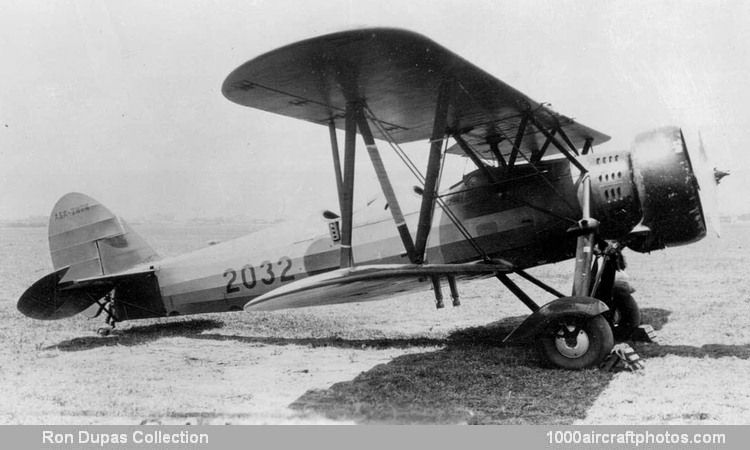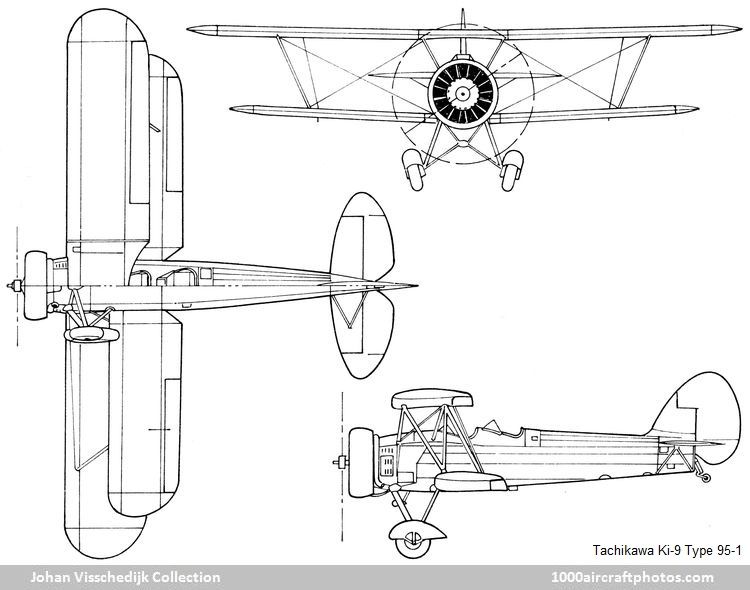05/31/2022. Remarks by Johan Visschedijk: "In 1933 the private venture R-5 primary trainer powered by a 125 hp A.D.C. Cirrus IV and built by Tachikawa Hikoki K.K. was tested by the IJAAF which found the aircraft too small for their use. However, as a result of these tests, Tachikawa was invited in March 1934 to discuss with personnel of the Tokorozawa Army Flying School the requirements for future Army trainers. A month later the IJAAF instructed Tachikawa to design an aircraft which, by fitting different engines, could serve as a primary trainer or as an intermediate trainer.
The intermediate trainer version was to be powered by a 350 hp Hitachi Ha-13a nine-cylinder air-cooled radial engine and equipped with full blind-flying instrumentation. The primary trainer version was to be powered by a 150 hp Nakajima NZ seven-cylinder air-cooled radial engine and all special equipment was eliminated to reduce weight. Both engines would drive two-blade wooden propellers. Despite the fact that Tachikawa was not in favor of this type of interchangeability, the IJAAF, noting that the problems presented by this requirement had been successfully solved by aircraft designers in Poland and Sweden, insisted on having the Ki-9 designed along these lines.
Designed by Ryokichi Endo, three Ki-9 prototypes were built in late 1934 and the first Ha-13a powered intermediate trainer made its first flight on January 7, 1935. Controls were found to be rather heavy and maneuverability was disappointing as the aircraft's center of gravity was located too far forward, while the main landing gear shock absorbers were excessively hard. Minor modifications were quickly made and, on January 9, during the second flight the stall characteristics were checked, the aircraft being delivered immediately thereafter for Service trials at Tokorozawa Airfield (also known as Akitsu Airfield), some 18 mls (29 km) Northwest of Tokio.
A second intermediate trainer prototype was delivered shortly after while the third aircraft was powered by the 150 hp NZ and served as prototype for the primary trainer version. With the lighter engine the center of gravity was located too far back and the aircraft suffered from poor handling characteristics on take off.
Following completion of Service trials at Tokorozawa, only the Ha-13a powered intermediate trainer was accepted for production as the Army Type 95-1 Medium Grade Trainer Model A. Later an improved version of the aircraft was produced as the Army Type 95-1 Medium Grade Trainer Model B (Ki-9 KAI). This version was lighter and featured a sturdier landing gear and shorter fuselage. This last modification resulted in a rearward shift of the center of gravity which improved maneuverability.
The Ki-9s remained in service with the IJAAF throughout the Sino-Japanese conflict and the Pacific War and was coded "Spruce" by the Allies. The aircraft was also operated during the war by the Cochin China, Manchurian and Thai air forces and, after the war, by the fledgling air arm of the Indonesian People's Security Forces."

